Ertach Kernow - The Luxulyan Valley and industrial woodlands
The Luxulyan Valley
Nights are drawing in and autumn is well and truly with us, but as long as the weather holds back from the winter storms there are opportunities to enjoy our Cornish environment. We should be very thankful for the twelve Areas of Outstanding Natural Beauty (AONB) that Cornwall has, along with the areas designated as part of the Cornish Mining World Heritage areas. The description for World Heritage is ‘the designation for places on Earth that are of Outstanding Universal Value to humanity and as such, have been inscribed on the World Heritage List to be protected for future generations to appreciate and enjoy.’ There is great concern within Cornwall and no doubt beyond that continuous housebuilding, with seemingly little positive effect on the housing crisis for local people, is gradually eroding Cornwall’s landscape. To this must be added the new public infrastructure needed to service the population growth. Writing about Cornwall’s water supplies at the beginning of May I would never have imagined that Colliford Lake on Bodmin Moor holding 28,500 megalitres of water would be down to just 18% full now and Stithians only 16%. Will the future see huge swaths of land be commandeered for future reservoirs to meet the demands of increased housing, population and tourism? Although beautiful and often advantageous to wildlife a reservoir does come at a cost to farmland, heritage sites, local ecology and sadly sometimes historic communities.
This past week we visited the Luxulyan Valley, an area which has protection, for an enjoyable walk and an inspection of the new interpretation boards in this one of Cornwall’s nine Mining World Heritage districts. Besides a very peaceful and picturesque walk this area has some interesting remnants of its mining past, besides the historic Treffry Viaduct. We started off at the Black Hill Carpark and walked along the Wheelpit Walk (Short Walk B on the interpretation board) a not too arduous walk through the woodland and overlooking some of the other historic sites on the Rock Mill Tramway and Lady Rashleigh Mine Walk. This walk is Walk C and is about two thirds of the walk we undertook. I was most impressed by the interpretation panels and had downloaded them and put on a tablet to look at during the walk.
There is no doubt that Joseph Thomas Treffry was a visionary and a Cornish entrepreneur that Cornwall can be proud of. His acquisition of control of the Fowey Consuls Mines had many positive repercussions for the advancement of Cornwall, especially mid-Cornwall. The growth of his mining interests led to the purchase of the Manor of Tewynblustri in 1838 which in turn through completion of the expansion of Newquay Harbour, and subsequent maritime trading, led to Newquay’s growth from small hamlet to a major Cornish town. Obviously the largest monument to Treffry is the viaduct named after him and this in itself is a masterpiece of engineering. As the interpretation board tells us ‘It is the only known viaduct in Britain combining horse drawn tramway and a leat.’ The leat, which is a channel carrying water, was used to supply water to the waterwheel for the Carmears Incline Plane.
The foundation stone for the Treffry Viaduct was laid on Wednesday 5th March 1839, a day we now recognise as St Piran’s Day and Cornwall’s National Day. There was as described a large and respectable company there to observe the ceremony. Of the future completed viaduct it was said that it ‘will present a very beautiful appearance and be a great relief to the rugged and romantic valley which it is intended to cross.’ Today the viaduct rising above the trees does create a visually attractive feature amongst the woodland trees. Foundation stone laying day saw huge blocks of granite lying around the paths in readiness. The foundation stone itself was a block weighing 12 tons of white granite being raised by a group of workmen ready for the arrival of J T Treffry himself at 12.30pm. At 1.30pm the great stone was lowered into place, this time with no memorial beneath the stone as was usual at the time and commented on by Treffry in his speech. Interestingly Sir Coleman Rashleigh mentioned in his speech about the work Treffry had done in employing many local people and ensuring the mines had continued and miners not lost to Cornwall. Rashleigh also mentioned the plans that Treffry had drawn up to continue a mineral line to Newquay, followed by much cheering and back slapping by the good and great in attendance. Needless to say, the viaduct was completed to a high standard, and we today are the modern beneficiaries of this interesting monument and attractive woodland that also has other industrial remains for us to wonder at.
Some of you may have read in an earlier Ertach Kernow article about the ‘Hungry Forties’ which had led to rioting in Cornwall and Cornishmen and women breaking into grain stores. However, Treffry was proactive in ensuring his employees were helped by providing subsidised food, such as flour. He obviously understood that a supportive workforce was good for business and as the largest employer in mid-Cornwall he relied on the many hundreds of workers employed to carry his various projects forward.
The woodland is home to mainly deciduous trees which includes ash, beech, sycamore and ancient oak. There are also large shrubs including holly and hazel. Of course, the dampness of the woods encourages a wide selection of fungi and mosses along with ever present ferns. A range of smaller mammals that also includes otters and the only flying mammal the bat. Trevanny Dry is home to a Horseshoe bat colony. Birds such as herons, grey wagtail and dippers as well as all the usual birds we see in other places in Cornwall including our gardens inhabit these woods.
Also included within this wider mining area is the village of Charlestown, originally known as Porthmoer in 1354 later Polmere in 1584 and Charlestown in the 18th century. Its name in Kernewek, the Cornish language, is Porthmeur West with the Cornish element of Porthmeur meaning great cove/harbour. As with many small coastal communities the original settlement grew as a fishing hamlet based around pilchard fishing. The population can be estimated at about one hundred in 1790 when there were nine fishermen and their families living there. Expansion took place between 1792 and 1800 when landowner Charles Rashleigh began construction of the harbour and dock in 1791. With the dock gates completed in 1799 the village also became known as Charlestown. Built originally to enable the export the copper ore extracted from the Crinnis Hill Mine on the outskirts of the village, it would later include many more types of minerals from other mines. Other mines located around the village were the Charlestown United Mines and the South Polmear Mine, altogether these mines employed over 700 men, women and children.
By 1847 the population had grown to such an extent that a new parish was created, taken from the oversized St Austell parish. This new parish held some 3,000 people and a new church was required to service the population. Begun with the laying of the foundation stone on 27th November 1849 on land granted by Augustus Crowder of the Charlestown Estate in 1848 the unfinished St Pauls Church was consecrated on 30th May 1851. Construction of the church had coincided with the collapse of mining in the area and funding for the project was exhausted before a proper belfry could be completed with bells. It wasn’t until the early 1970’s that an appeal was launched to provide the church with a proper belfry, with a peal of bells, and a steeple. On 28th July 1972 the tower was consecrated, and bells blessed. Interestingly the tower was constructed of reconstituted stone and slate, but it has a fibreglass steeple.
Today Charlestown is perhaps better known for the sailing ships based at the harbour and Shipwreck Treasure Museum. There are many small businesses, craft and art shops and a wide range of retail places to browse and buy goods as well as eat. For me looking back to my insurance broker days, visiting George Morcom and his wife June who owned the Pier House Hotel at Charlestown was always a great pleasure. Lovely Cornish folk remembered with great affection. Today the Pier House is still a superb place to sit and overlook the historic harbour whilst imbibing in a refreshing drink. Often used in historic filming, such as Poldark, a visit to Charlestown is well worthwhile especially by those who have only viewed it as part of a television drama.

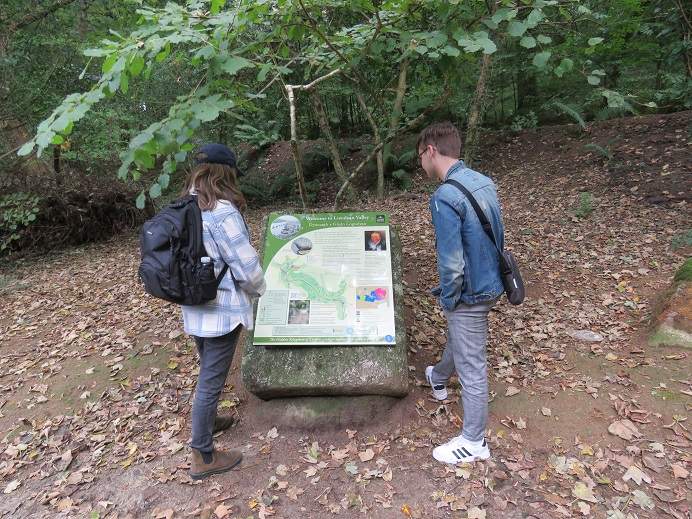
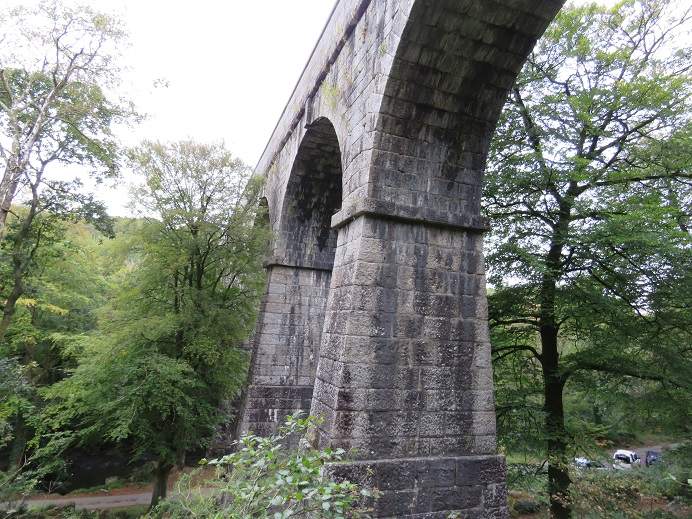
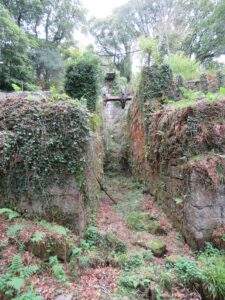
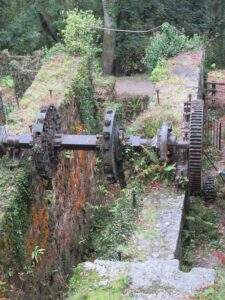
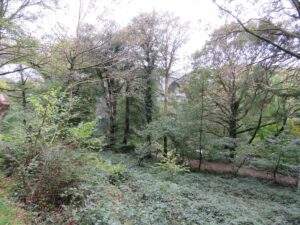
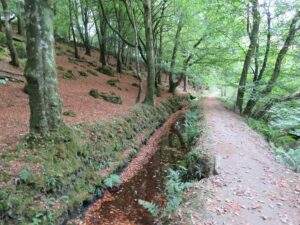
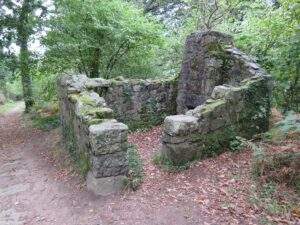
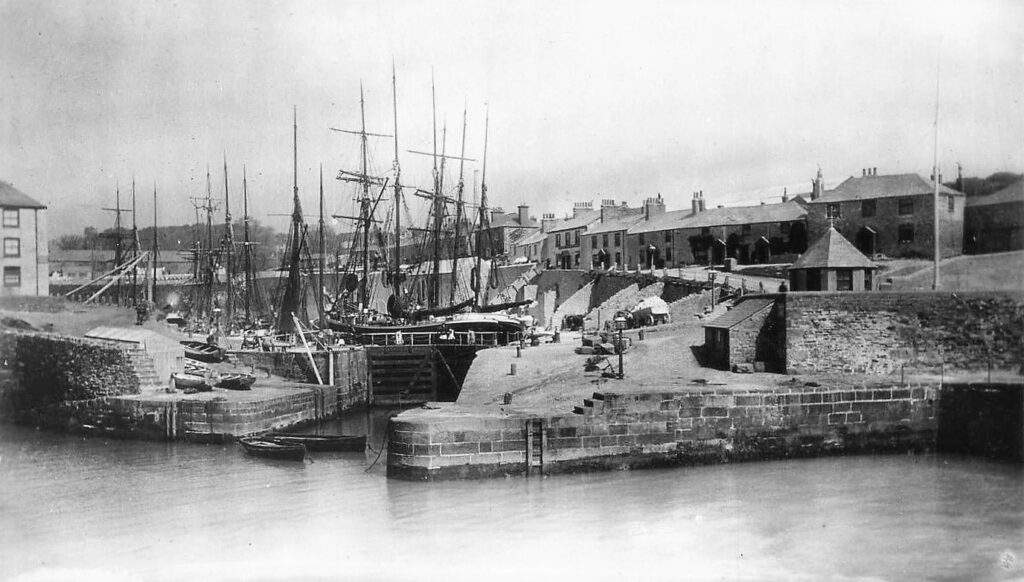
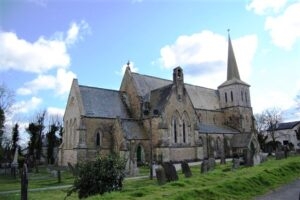
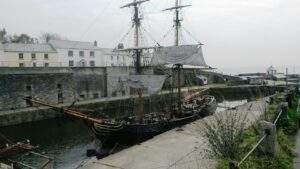
![Ertach Kernow - 26.10.2022 Luxulyan Valley [1] The Luxulyan Valley](https://www.cornwallheritage.com/wp-content/uploads/2022/10/Ertach-Kernow-26.10.2022-Luxulyan-Valley-1-246x300.jpg)
![Ertach Kernow - 26.10.2022 Luxulyan Valley [2] Ertach Kernow - Luxulyan Valley](https://www.cornwallheritage.com/wp-content/uploads/2022/10/Ertach-Kernow-26.10.2022-Luxulyan-Valley-2-244x300.jpg)
![[122] Ertach Kernow Heritage Column - 26th October 2022 - Redruth a cultural centre Ertach Kernow Heritage Column - 26th October 2022 - Redruth a cultural centre](https://www.cornwallheritage.com/wp-content/uploads/2022/10/122-Ertach-Kernow-Heritage-Column-26th-October-2022-Redruth-a-cultural-centre-300x293.jpg)